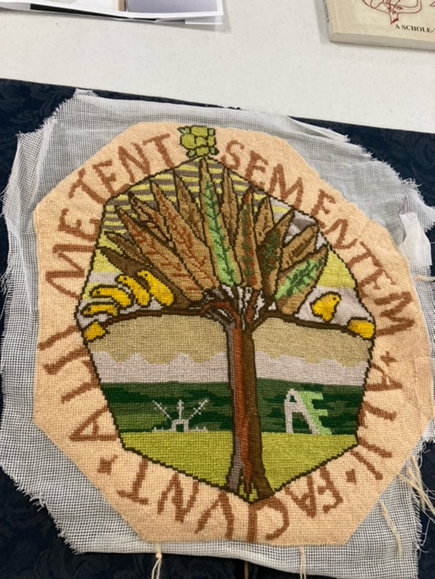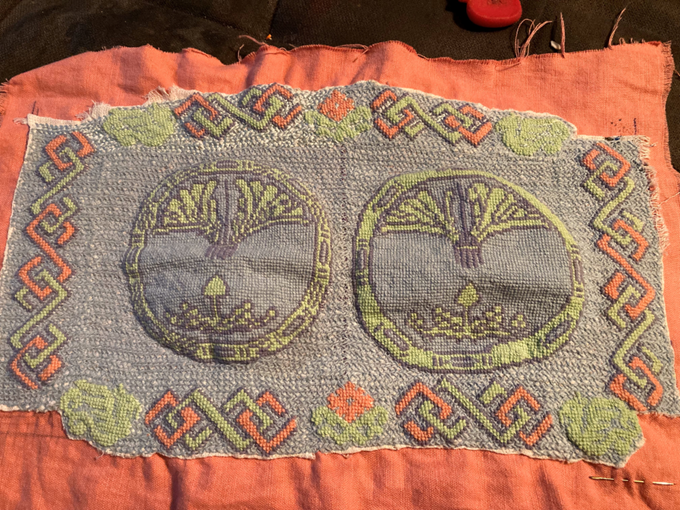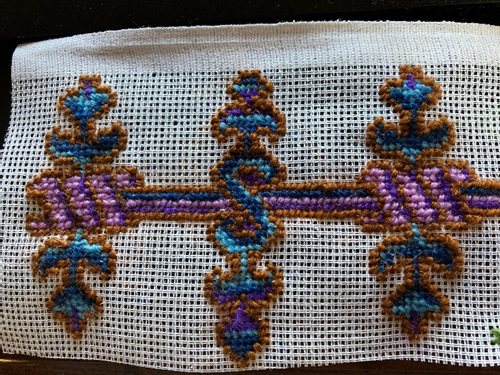A DIVE INTO 16TH CENTURY CROSS STITCH; A RECREATION OF THE DATE PALM

QUEENS PRIZE/ A&S FAIRE 2024 PROJECT BRIEF From 1568-1587 Queen Mary of Scotland was held captive in England. During those years she, along with Elizabeth of Shrewsbury, created dozens of cross stitched pieces, to pass the time, decorate the castle in finery and to pass on messages (at least on the part of Mary) WHY THIS PROJECT? I have had an obsession with these creations as well as table carpets for a very long time. I felt that this project was a good place to start. Using a fabric I have used before (double woven cotton) as well as a thread I am not as skilled in (wool) this became a good challenge of my skills and knowledge AVAILABLE RESOURCES While the original purpose is not known, it is believed that these slips were given as gifts, and used as functional items prior to being turned into their current hangings. The hangings were created by Alathea Talbot in the 17 th

